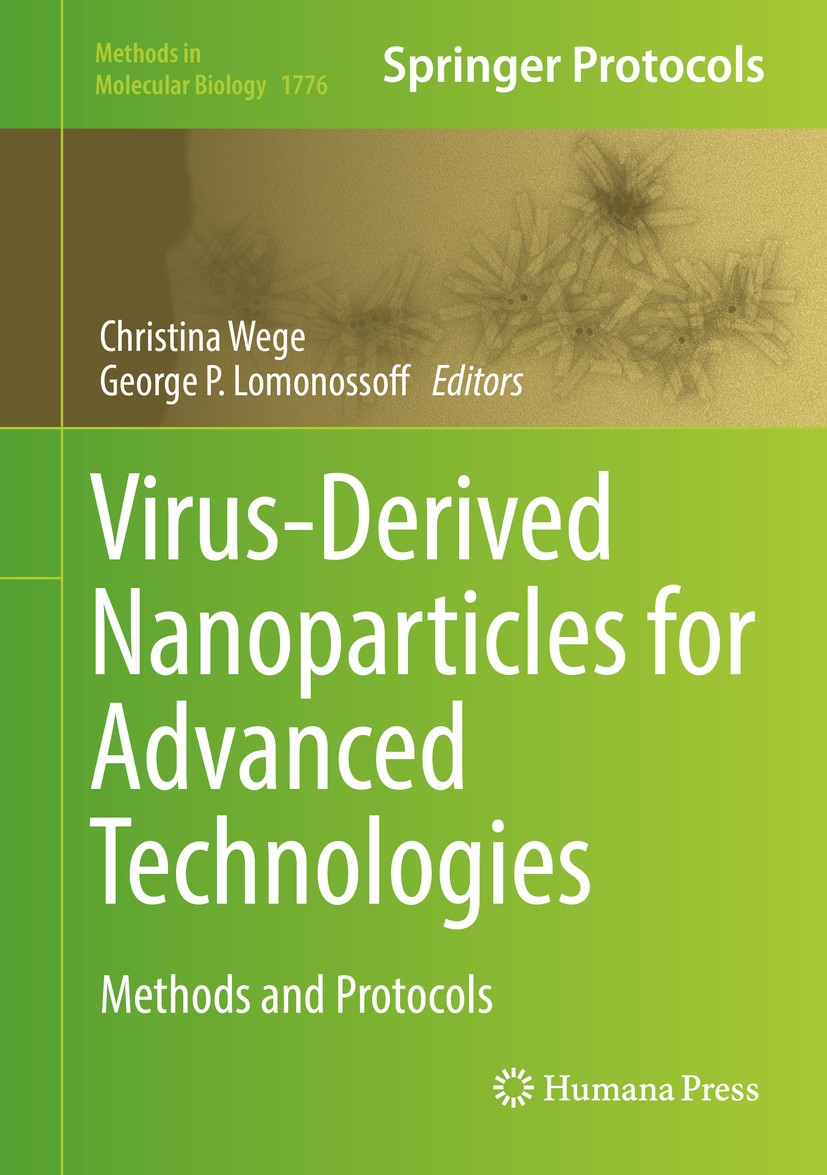| 书目名称 | Virus-Derived Nanoparticles for Advanced Technologies | | 副标题 | Methods and Protocol | | 编辑 | Christina Wege,George P. Lomonossoff | | 视频video | http://file.papertrans.cn/984/983523/983523.mp4 | | 概述 | Includes cutting-edge methods and protocols.Provides step-by-step detail essential for reproducible results.Contains key notes and implementation advice from the experts | | 丛书名称 | Methods in Molecular Biology | | 图书封面 |  | | 描述 | .This volume details protocols on virus-derived nanoparticles (VNPs) for a number of different applications. Chapters guide readers through the production of VNPs derived from plant, animal and bacterial viruses, prokaryotic and eukaryotic expression systems, encapsulation of heterologous materials within VNPs, and the modification of the outer surface of VNPs and how such modified VNPs can be developed into functional entities. Written in the highly successful .Methods in Molecular Biology .series format, chapters include introductions to their respective topics, lists of the necessary materials and reagents, step-by-step, readily reproducible laboratory protocols, and tips on troubleshooting and avoiding known pitfalls... Authoritative and practical,. Virus-Derived Nanoparticles for Advanced Technologies: Methods and Protocols .aims to ensure successful results in the further study of this vital field.. | | 出版日期 | Book 2018 | | 关键词 | Nanotechnology; nanoparticles; virus-like particles; heterologous materials; supramolecular structures | | 版次 | 1 | | doi | https://doi.org/10.1007/978-1-4939-7808-3 | | isbn_softcover | 978-1-4939-9291-1 | | isbn_ebook | 978-1-4939-7808-3Series ISSN 1064-3745 Series E-ISSN 1940-6029 | | issn_series | 1064-3745 | | copyright | Springer Science+Business Media, LLC, part of Springer Nature 2018 |
The information of publication is updating

|
|
 |Archiver|手机版|小黑屋|
派博传思国际
( 京公网安备110108008328)
GMT+8, 2025-11-13 01:51
|Archiver|手机版|小黑屋|
派博传思国际
( 京公网安备110108008328)
GMT+8, 2025-11-13 01:51


